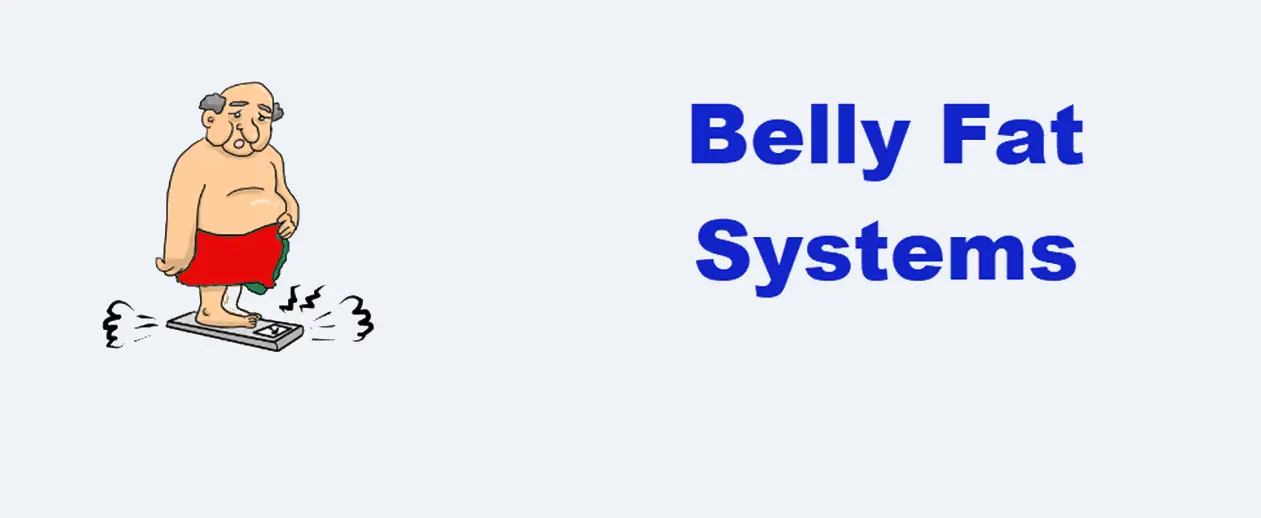Ugh, the dreaded belly bulge. No matter how much you diet and exercise, stubborn stomach fat won’t budge. What’s the deal with this type of fat, and why is it so difficult to lose? Well, my friends, let me break it down for you. Stomach fat, also known as visceral or abdominal fat, is a unique and particularly frustrating type of fat that behaves quite differently from the fat accumulating in other areas of the body.
The Difference Between Stomach Fat and Other Fat
You see, not all fat is created equal. The fat that collects around your midsection fundamentally differs from the fat that settles on your thighs, hips, or upper arms. This stomach fat, or visceral fat, is located deep within the abdominal cavity, surrounding your vital organs like the liver, stomach, and intestines. In contrast, the fat that gathers on your arms, legs, and other areas is known as subcutaneous fat, which sits just under the skin. This type of fat is generally less problematic and more accessible to lose through diet and exercise. But that pesky visceral fat? Well, it’s a whole other beast. This deep abdominal fat is more metabolically active, constantly releasing hormones and other substances that can wreak havoc on your body.
The Hormonal Havoc of Stomach Fat
Visceral fat is essentially an endocrine organ in its own right. It produces a variety of inflammatory compounds, like cytokines and adipokines, which can contribute to insulin resistance, high blood pressure, and other health issues. This hormonal activity is a big part of what makes stomach fat stubborn and challenging to lose. As the fat builds up, it disrupts your body’s delicate hormonal balance, making it harder and harder to shed those extra pounds around your midsection.
The Evolutionary Advantage (That’s Now a Disadvantage)
But why, you might ask, is this type of fat so darn hard to get rid of in the first place? Well, it all comes down to evolution, my friends. Back in the day, when our ancestors were hunter-gatherers, having a bit of extra belly fat was an advantage. This visceral fat served as a reserve of energy that could be tapped into during times of scarcity or famine. It helped our forebears survive and thrive in a world without readily available food. However, this evolutionary adaptation has become a significant liability in our modern, calorie-abundant world. Our bodies are still programmed to cling to that belly fat, even when plenty of other energy sources are available.
The Stubborn Struggle to Lose Stomach Fat
So, with all of this hormonal and evolutionary baggage, it’s no wonder that stomach fat is so darn tricky to lose. Traditional weight-loss methods, like calorie-cutting and cardio, can help, but they often fall short when targeting that stubborn visceral fat. When you start to lose weight through diet and exercise, your body tends to prioritize shedding the more accessible subcutaneous fat first. It’s like your body says, “Okay, let’s get rid of the easy stuff before we tackle the hard stuff.”And that hard stuff? That’s the deep, stubborn visceral fat wrapped around your organs. This type of fat is much more resistant to being burned off thanks to its hormonal and metabolic properties.
The Importance of Targeting Visceral Fat
Now, I know what you’re thinking: “But wait, if I’m losing weight, isn’t that all that matters?” Well, not exactly. You see, the type of fat you lose is just as important as the weight you shed. Losing subcutaneous fat is excellent, but visceral fat is the real culprit for health issues. That deep abdominal fat is the one that’s linked to an increased risk of heart disease, type 2 diabetes, and other severe conditions. So, while you may lose weight overall, if you’re not specifically targeting that stubborn visceral fat, you could still be at risk for these health problems. That’s why focusing on strategies to help you lose that deep belly fat is essential, rather than relying on general weight-loss methods.
Strategies for Tackling Visceral Fat
Okay, now that you know why stomach fat is so difficult to lose, let’s talk about what you can do about it. Here are some effective strategies for targeting that stubborn visceral fat:
- Incorporate High-Intensity Interval Training (HIIT): HIIT workouts, which involve short bursts of intense exercise followed by rest periods, are particularly effective at reducing visceral fat. HIIT’s intense nature helps boost your metabolism and burn through that deep abdominal fat.
- Prioritize Strength Training: Lifting weights and building muscle mass can also be a game-changer when losing visceral fat. Muscle tissue is more metabolically active than fat, so the more muscle you have, the more calories your body will burn, even at rest.
- Focus on Stress Management: Chronic stress can significantly contribute to visceral fat accumulation, as it can disrupt your hormonal balance and increase cortisol levels. Try incorporating stress-reducing activities like meditation, yoga, or deep breathing exercises into your routine.
- Adjust Your Diet: While calorie-cutting is important for overall weight loss, you’ll also want to pay attention to the types of foods you eat. Opt for a diet rich in lean proteins, healthy fats, and fiber-packed fruits and veggies, which can help reduce inflammation and support the loss of visceral fat.
Remember, losing that stubborn stomach fat is a journey, not a sprint. Finding the right combination of strategies that work best for your body may take some time and experimentation. But with patience, persistence, and a focus on targeting that deep abdominal fat, you can conquer the bulge battle.





